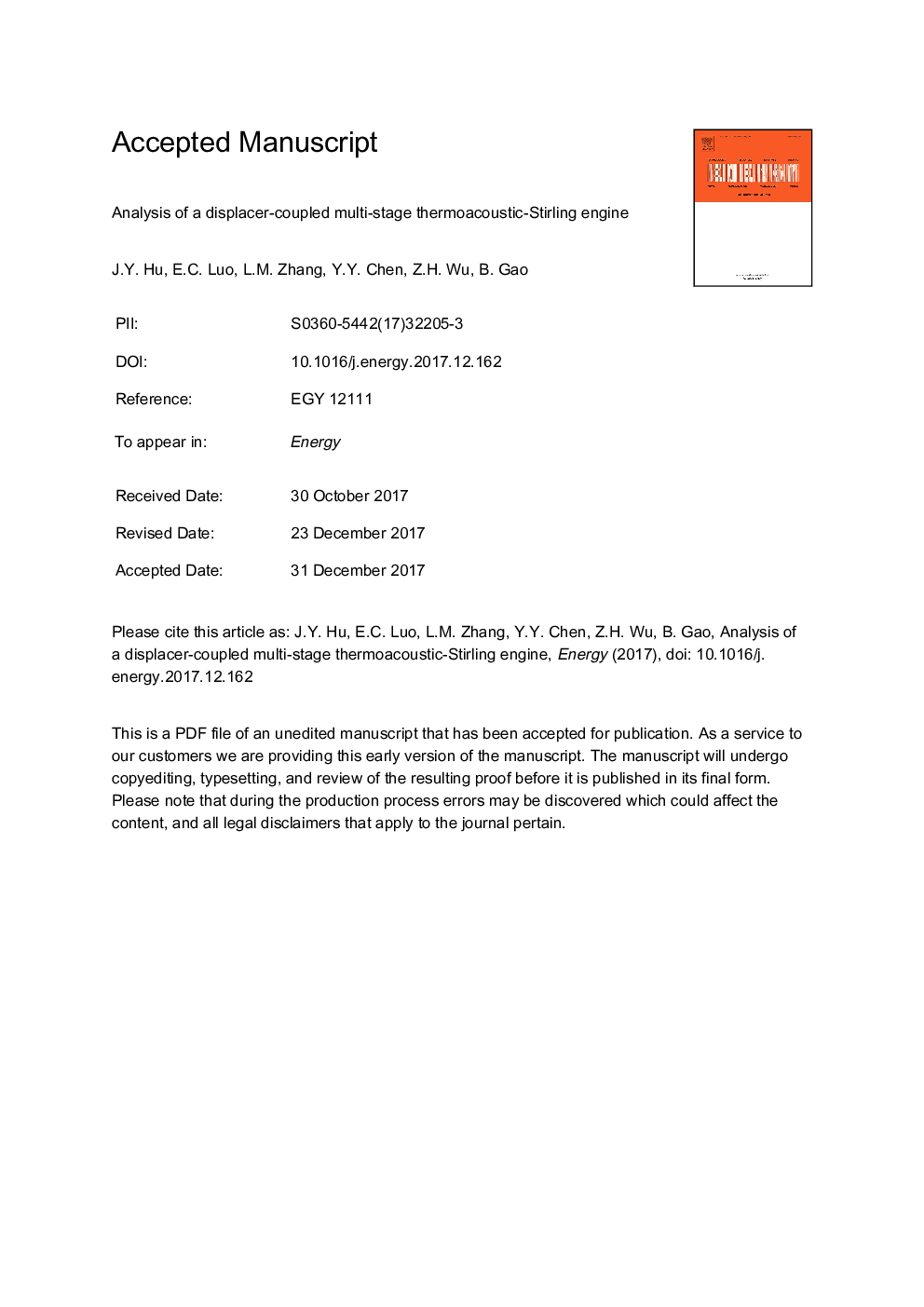| Article ID | Journal | Published Year | Pages | File Type |
|---|---|---|---|---|
| 8072228 | Energy | 2018 | 35 Pages |
Abstract
A new thermoacoustic-Stirling engine is introduced, composed of a compressor, regenerative assemblies, displacers and an alternator. The regenerative assemblies are coupled to displacers to successively multiply the acoustic power input by the compressor. The amplified acoustic power is converted into electric power in the alternator. This new configuration overcomes the limitations of traditional thermoacoustic or Stirling engines, including losses in long resonant tubes, response hysteresis and current inversion. The design method of the displacers and alternators is presented. Numerical simulations are carried out to investigate the characteristics of this system. Results show that the overall efficiency of this system could reach 47% with heating temperature of 900â¯K. Changing alternator load is the most plausible factor in piston or displacer exceeding the displacement limit. These parts can be effectively protected as long as the voltage of the compressor can be instantaneously adjusted. The working frequency, charging pressure and mechanical resistance do not substantially influence the efficiency and power capacity, when varied within a limited range. This allows the proposed engine to work stably when these parameters deviate from the design.
Related Topics
Physical Sciences and Engineering
Energy
Energy (General)
Authors
J.Y. Hu, E.C. Luo, L.M. Zhang, Y.Y. Chen, Z.H. Wu, B. Gao,
